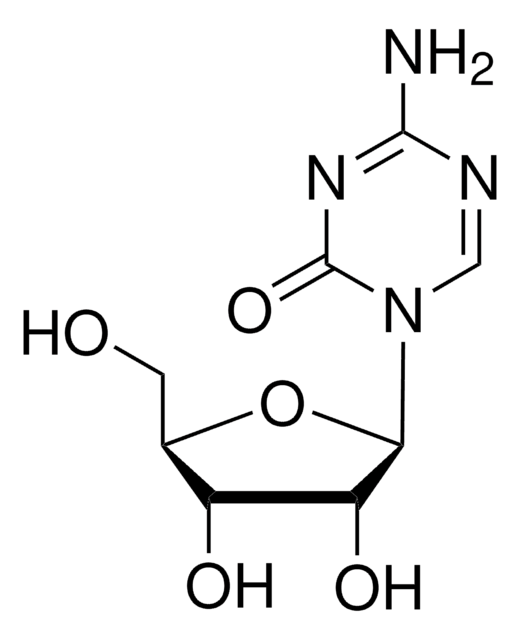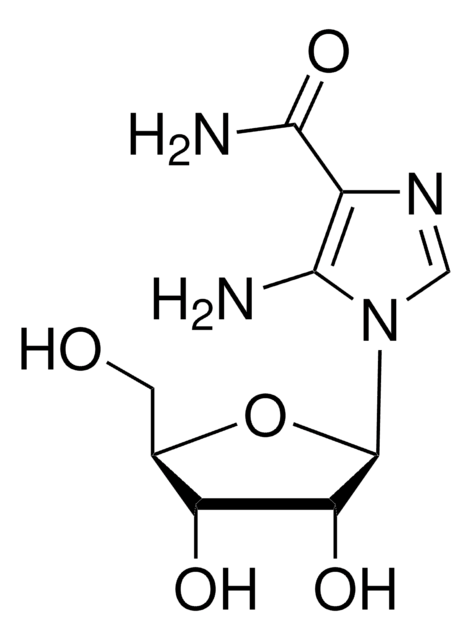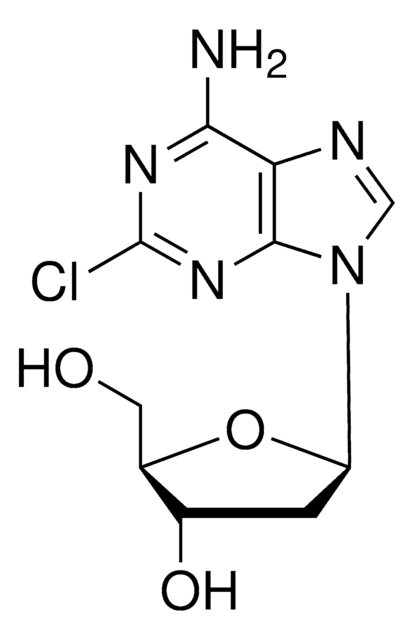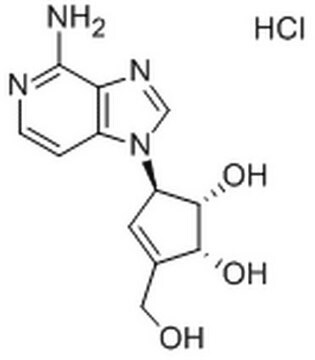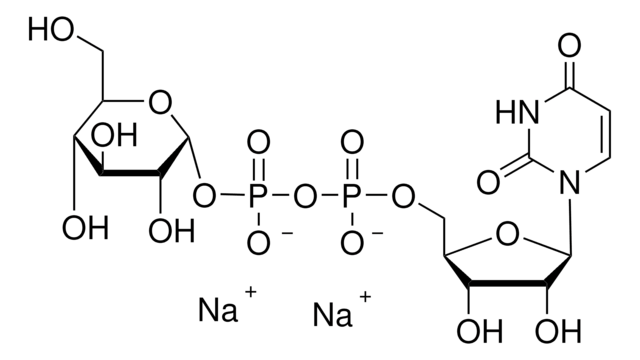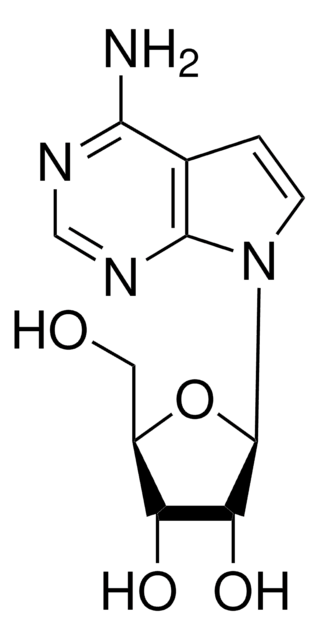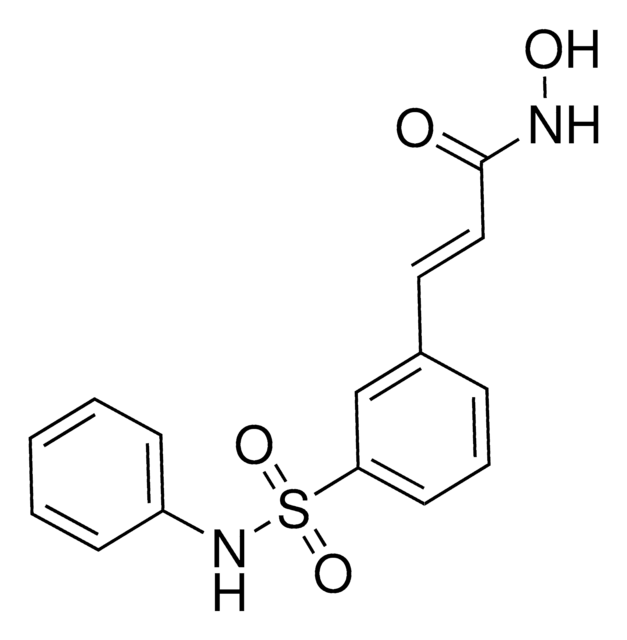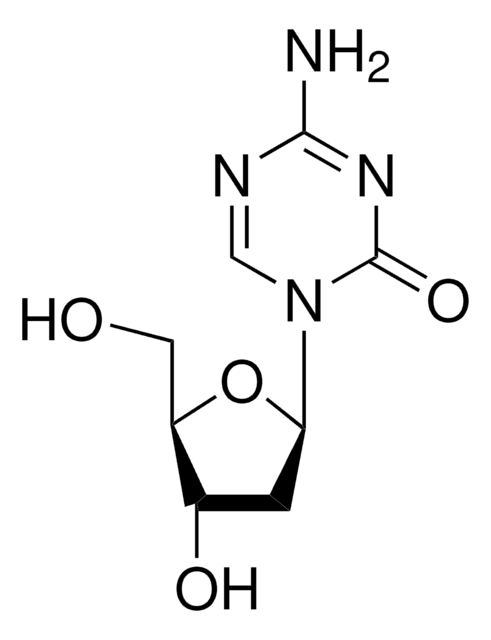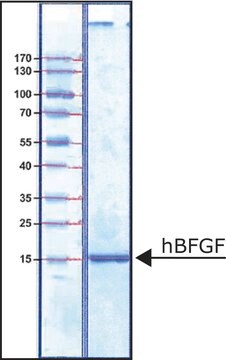D8296
3-Deazaadenosine
Sinónimos:
4-Amino-1-(β-D-ribofuranosyl)-1H-imidazo(4,5)-pyridine
About This Item
Productos recomendados
Formulario
powder
Nivel de calidad
temp. de almacenamiento
2-8°C
cadena SMILES
Nc1nccc2n(cnc12)[C@@H]3O[C@H](CO)[C@@H](O)[C@H]3O
InChI
1S/C11H14N4O4/c12-10-7-5(1-2-13-10)15(4-14-7)11-9(18)8(17)6(3-16)19-11/h1-2,4,6,8-9,11,16-18H,3H2,(H2,12,13)/t6-,8-,9-,11-/m1/s1
Clave InChI
DBZQFUNLCALWDY-PNHWDRBUSA-N
Información sobre el gen
rat ... Adora1(29290) , Adora2a(25369) , Adora3(25370)
Aplicación
- to study the effect of m6A modification on suppressor of cytokine signaling 2 (SOCS2) expression in colon cancer cells
- to study its effects on the expression of influenza A virus (IAV) proteins in human lung epithelial cell line
- to evaluate its effects on the replication of SV40 virus in BSC40 cells
Acciones bioquímicas o fisiológicas
Código de clase de almacenamiento
11 - Combustible Solids
Clase de riesgo para el agua (WGK)
WGK 3
Punto de inflamabilidad (°F)
Not applicable
Punto de inflamabilidad (°C)
Not applicable
Equipo de protección personal
Eyeshields, Gloves, type N95 (US)
Elija entre una de las versiones más recientes:
¿Ya tiene este producto?
Encuentre la documentación para los productos que ha comprado recientemente en la Biblioteca de documentos.
Los clientes también vieron
Nuestro equipo de científicos tiene experiencia en todas las áreas de investigación: Ciencias de la vida, Ciencia de los materiales, Síntesis química, Cromatografía, Analítica y muchas otras.
Póngase en contacto con el Servicio técnico